Speaker
Description
Pesticide residues and their degradation products can persist on harvested food, as well as in the environment, therefore representing a risk to human and animal health and the environment. The challenges for the pesticide residue analysis are the huge number of possible residues, the chemical diversity of the pesticides, the variety of matrices, and the control of the statutory maximum residue levels that are partly very low [1].
Classical one-dimensional liquid chromatography - mass spectrometry approaches do not always provide the resolving power and selectivity necessary for the analysis of complex samples. To this end, two-dimensional liquid chromatography - mass spectrometry offers a better resolving power and peak capacity and allows decreasing matrix effects as a result of the advanced separation of analytes and matrix components. Furthermore, two-dimensional liquid chromatography - mass spectrometry allows omitting the classical liquid-liquid and solid-phase extraction steps during sample preparation for some samples [2].
Recent developments in pesticide analysis by two-dimensional liquid chromatography - mass spectrometry could be divided in three large research directions.
Firstly, the aim of the researchers is to simultaneously identify as many different pesticides, for example, QuEChERS amenable and highly polar ones and other food contaminants like mycotoxins, plant growth regulators, alkaloids in different matrices within a single analytical run. By means of using two-dimensional liquid chromatography - mass spectrometry it also becomes more viable to analyse complicated and dirty matrices such as hops, tea and tobacco which used to be quite complicated due to matrix interference.
Secondly, the task of the researchers is to separate and quantify enantiomers of chiral pesticides that have similar physical and chemical properties, but differ in their toxicity and biological activity, because biotransformation of chiral molecules could be stereoselective. Likewise, enantiomers could have different degradation patterns in the environment [3].
Thirdly, the desire of the researchers is to replace classical QuEChERS protocol-based sample preparation with two-dimensional liquid chromatography - mass spectrometry as the only tool of sample analysis and preparation without any further manual sample pre-treatment except extraction with, for example, acetonitrile or acetonitrile - water mixture.

